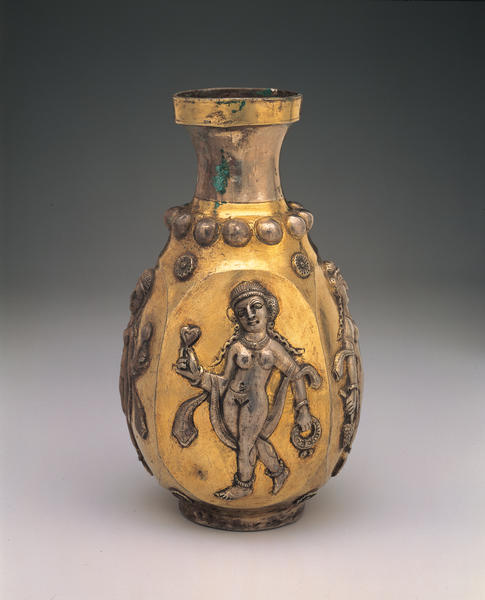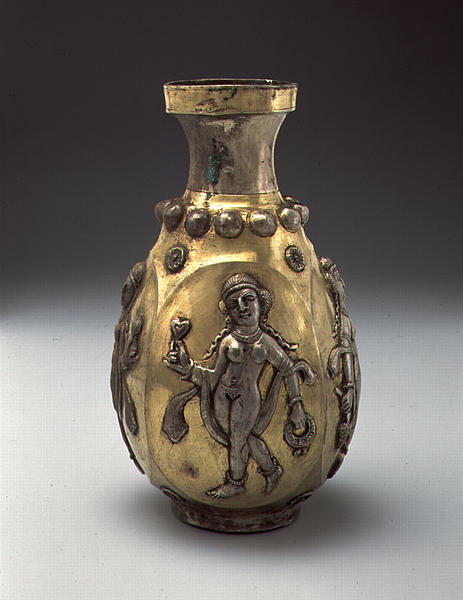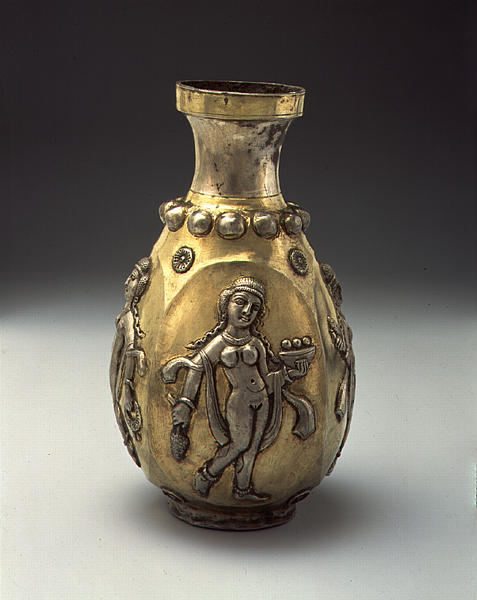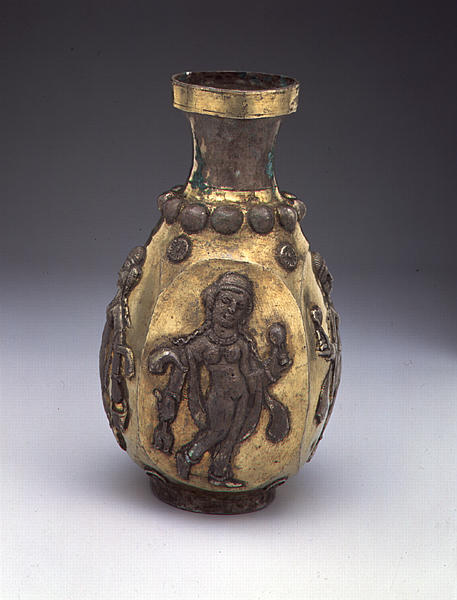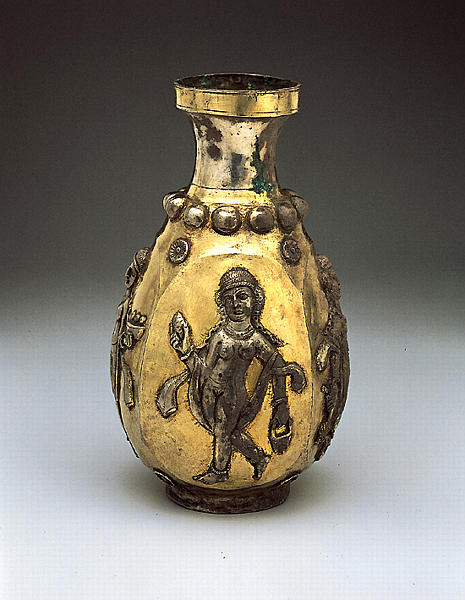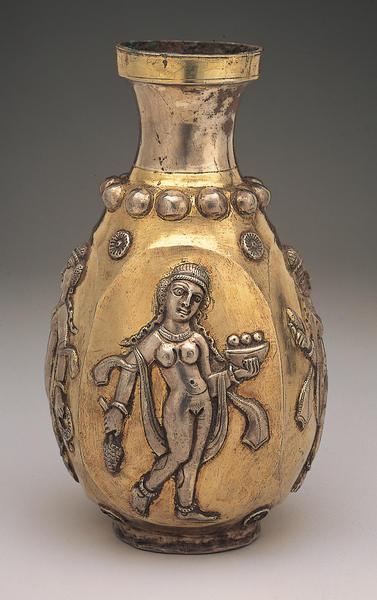Vase with Dancing Female Figures
- Iran
- Persia, Sasanian period
- about 6th century
- Silver gilt
- H-18.1 D-6
Catalogue Entry
This slender, pear-shaped vase, with a vertical rim, narrow neck, beaded collar, and flat foot, is decorated with four nude dancing female figures, each of whom turns, in a three-quarter pose, toward one of the figures adjacent to her, thus forming two pairs of figures. The body of the vessel has been shaped into four contiguous oval surfaces that serve as frames for the females. Between these ovals at the top and the bottom, are small rosettes. The curving line of the hammered surface above the head of each figure gives the impression of an arch--an architectural feature that is often carefully represented on other Sasanian vases and ewers decorated with dancing females.
In their hands--one of which is raised and the other lowered--the female figures carry a standard set of objects: flowers, bowls of fruit, a jeweled necklace, and a situla, or pail. An unusual detail on this vessel is the hatched ovoid object held by the figure who also grasps the handle of the situla.
Interpretations of such scenes of dancing nude and draped females, which appear on Sasanian silver vases and ewers and, more rarely, on plates, are uncertain. The images are often compared to representations of the maenads of Dionysos found in the art of the Hellenistic and Roman worlds, but the significance of the subject in a Sasanian context is not clear. The females and the attributes they hold also resemble depictions of the Seasons and the Months in Roman art, and there may be an intended reference on the Sasanian objects to the seasonal festivals described in literary sources as occurring at specific times during the Zoroastrian calendrical year.1 Sasanian silver vessels decorated with the motif of dancing female figures were undoubtedly luxury objects, prized possessions of the nobility used at court banquets and celebrations.
POH
1. See Harper 1971, pp. 503-16.
